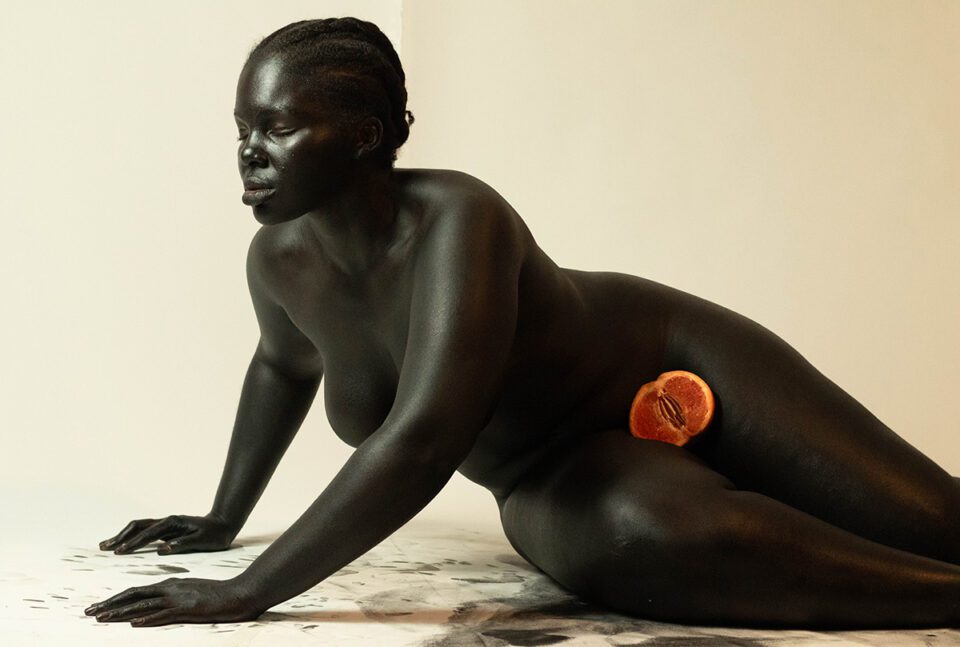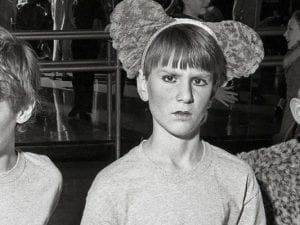In the seminal book Visual Pleasure and Narrative Cinema (1975), British feminist film theorist Laura Mulvey (b. 1941) investigated fetishisation on screen. “Women, then, stands in patriarchal culture as a signifier for the male other, bound by a symbolic order in which man can live out his fantasies and obsessions,” she wrote. “The silent image of a woman [is] still tied to her place as the bearer of meaning, not the maker of meaning.” Throughout visual culture, Mulvey argues, women have often been presented as highly sexualised, passive “objects” – a direct result of pervasive male gaze and a historically patriarchal society.

Mind Over Matter follows on from this line of argument, surveying photography that challenges gendered stereotypes in art history. It comes at a moment of such reappraisals; Katy Hessel’s The Story of Art Without Men, for example, won Waterstones Book of the Year 2022 for its fresh look at the canon. Mind Over Matter is curated by collective Femxphotographers.org – “a group of 15 globally-based womxn-identified photographers… with a mission to trouble the white, western, cis-gender, heterosexual male gaze in contemporary photography.” Artists who identify as women, trans and non-binary share myriad personal stories, emphasising the power of art and imagination to not only envision, but shape, new realities. Text, poems, manifestos and images paint a picture of “the femxle vision,” one that celebrates intellectual expression and uplifts creative voices which have, up until now, existed outside of the mainstream.

Janina Zais and HOLZINGERurbat’s collaborative photographs, for example, can be read as a challenge to existing depictions of the body, such as Allen Jones’ highly controversial “furniture” sculptures. In 1969, Jones presented a series of semi-nude models, each dressed in leather and contorted into the form of a household item: a chair, table or hat stand. The works sparked outrage for their objectification of women, with Mulvey publishing the essay You Don’t Know What Is Happening, Do You Mr Jones? in response. On International Women’s Day in 1986, a demonstrator poured paint stripper over Chair at Tate. Now, Zais and HOLZINGERurbat’s Now we have the Salad (2021) reclaims the use of unexpected poses to question ideas of perfection in a consumerist society. Figures are transformed into cars, batteries and famous landmarks, including the Eiffel Tower. “Paint serves as a second skin that guides them as they bend into the shape of objects or the posture of animals… they turn the premise of studio-based photography around: rather than searching for the ideal image of a body, they are concerned with finding the body of an image.”

Elsewhere, the book outlines both the diversity of, and disparity between, women across the globe. Black-Chinese-American artist Eva Woolridge documents the physical and psychological impact of medical inequity, focusing on the lack of research and information on Black women’s reproductive health. The Size of a Grapefruit (2019) chronicles ten emotional states from before, during and after the artist’s own traumatic medical event, including Denial, Blinding Pain and Empowerment. In each image, a nude figure adopts an elegant, mediative pose whilst balancing a deep orange, fleshy grapefruit on their body. The series is both a call for action and a guide for others facing the same experience. At its core, Mind Over Matter is about resistance. It foregrounds creatives who are dedicated to moving beyond outdated stereotypes, offering an uncompromising vision of what a truly inclusive art world can look like.
Words: Saffron Ward
Published by Hatje Cantz
Image Credits:
1. © Masako Hirano
2. © Weronika Gesicka
3. © Eva Woolridge
4. © Katharina Bosse





